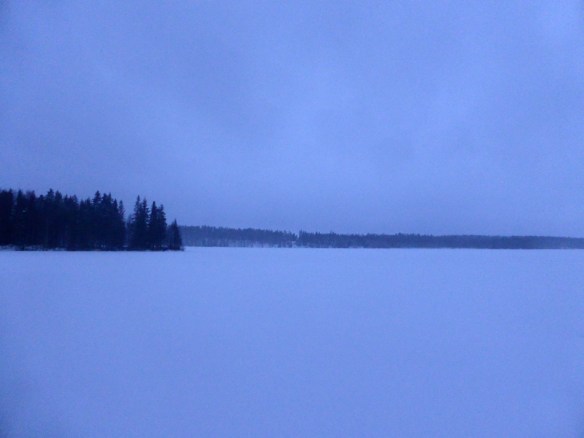Creating and recording a new musical composition in just one week is no easy feat. But that’s precisely what Seattle-based composer and sound artist Madeleine Cocolas did—every week for an entire year.
 The “Fifty-Two Weeks” project began when the Australian musician first moved to Seattle with her husband a few years ago. After settling into her new home, Cocolas challenged herself to write a new piece of music every week for 52 weeks and post it to her SoundCloud.
The “Fifty-Two Weeks” project began when the Australian musician first moved to Seattle with her husband a few years ago. After settling into her new home, Cocolas challenged herself to write a new piece of music every week for 52 weeks and post it to her SoundCloud.
The result was a series of 52 pieces wrapped up into a year-long blog chronicling her artwork, her travels, her successes, her struggles, and above all, her music. To call it ambitious would be an understatement—the project is downright massive in scope. It’s got minimalist piano musings, dreamy and ethereal vocal soundscapes, melodicas and found sounds, glitches and glitter. It’s got recorded kitchen clatter, toy accordions, and tape cassettes. It’s got vintage radio clips, Capitol Hill street art, a dash of Christmas whimsy and yes, even a healthy dose of cat photos.
But perhaps what’s most inspiring about Cocolas’s project is the authenticity behind each composition. There are good weeks, bad weeks, silly weeks, serious weeks, and even a few delirious weeks. There are some missed deadlines, a couple of do-overs, and the occasional rut—but that’s what makes the project honest and relatable. Her willingness to experiment, to push herself creatively, and to get outside her comfort zone are what makes the series so candid, authentic, and genuine. Each piece is a part of the journey—warts and all.
Last year Cocolas took over the Second Inversion airwaves to share a bit more about her 52-week process and some of her favorite pieces—and this year, she’s revisited the project with her new debut album titled “Cascadia.”
“A big part of ‘Fifty-Two Weeks’ was to explore and better define my compositional style,” Cocolas said. “And to me, ‘Cascadia’ best represents my ‘Fifty-Two Weeks’ project and current compositional style.”
The album is a refinement of material produced for her “Fifty-Two Weeks” project, along with a couple of brand new tracks. The result is a beautifully amorphous blend of ambient, experimental, electronic, and contemporary classical sound worlds with plenty of Pacific Northwest whimsy.
“Living in Seattle and the Pacific Northwest for the past three and a half years has influenced my music immeasurably,” Cocolas said, “And I feel like the music on ‘Cascadia’ and my ‘Fifty-Two Weeks’ project is a direct response and reaction to my surroundings here.”
The album begins with an oceanic dream: “The Sea Beneath Me.” Composed after the completion of her “Fifty-Two Weeks” project, this piece was the result of a collaboration with Australian textile artist Monique Van Nieuwland on her exhibition “Ocean Forest.” Van Nieuwland recorded herself weaving, and Cocolas reworked the recordings into an entire oceanscape of sounds which went on to become the basis for “The Sea Beneath Me.” Ethereal vocals float along the waves to create a shimmering seascape, immersing the listener in its vast expanse and its softly pulsing echoes. Nostalgic and melancholy, each wave is a work of art.
“Moments of Distraction” takes the listener out of the ocean and into the clouds with its whimsical and weightless piano melodies circling above a minimalist electronic backdrop. “I Can See You Whisper” layers twinkling piano melodies atop ambient textures and subtle strings, while “Sometimes I Can’t Hear You” crafts its own minimalist sound world out of layered piano motives and textured echoes.
A warm and ethereal new realm comes to life in “When I Knew I Loved You,” with airy vocals floating above ambient piano and toy accordion—it’s like the aural equivalent of having butterflies in your stomach.

Cocolas takes her electronic exploration to new sonic spaces in “Echoes,” an ethereal sound sculpture of vibration and reverb. Then her dreamy, washed-out vocals float through “If Wisdom Fails,” a lullaby brimming with tenderness and warmth.
“Static” shifts through dissonant piano melodies atop a textured drone, and the album comes to a close with a sweet and sincere solo piano piece: “If You Hear Me, I Hear You Back.” Cocolas’s tender piano melodies drift gracefully through the surrounding silence, accompanied by nothing but the vintage sounds of a tape recorder.
Simple yet powerfully poignant, it serves as a reminder of the humble beginnings from which this panoramic album was born. After all, with just “Fifty-Two Weeks” and a little imagination, Cocolas was able to create a musical map of Cascadia in all it’s sparkling and mystical splendor.

